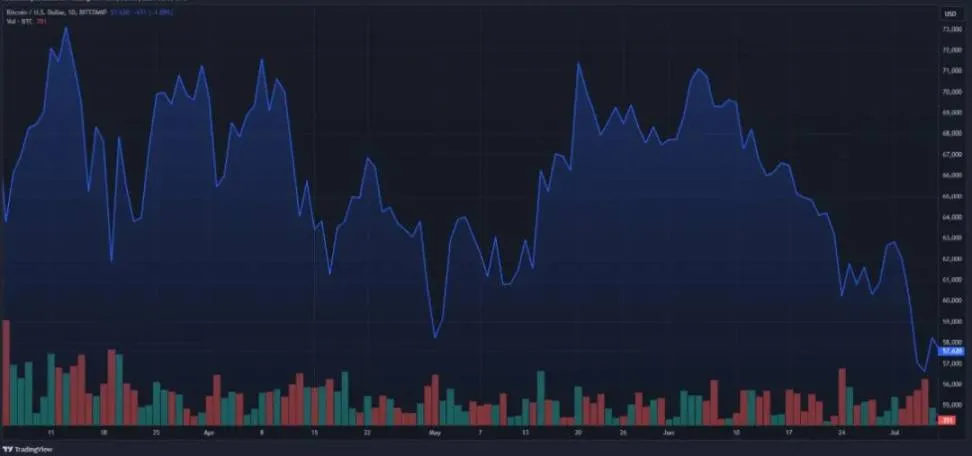Why the Governments Selling BTC Isn’t a Big Deal
Since June, the BTC market has experienced multiple “whale-like sell-offs.” Recently, it was reported that the German government is also selling its BTC holdings. However, most of these sell-offs are from miners and other major holders.
Due to the large transaction volumes, government sell-offs can be classified as “whale movements.” Many market participants believe these actions contribute to increased selling pressure and a drop in BTC prices.
However, CryptoQuant’s founder and CEO, Ki Young Ju, disagrees with this perspective. He believes that the impact of wallets associated with the government on the sell-offs is largely overestimated.
Interestingly, his view is based on the cumulative value of BTC inflows over the past year.
In the past two weeks, addresses linked to the U.S. and German governments have sent over $737 million worth of BTC to crypto exchanges Coinbase, Bitstamp, and Kraken.
Essentially, these transfers are just sell-offs by the exchanges. Notably, these transfers occurred during a month-long decline in BTC prices, which exacerbated the selling pressure.
Despite headlines about “government BTC sell-offs” causing fear, uncertainty, and doubt in the crypto community, the overall volume is actually quite small.

According to CryptoQuant data, BTC has received over $224 billion in inflows since 2023, with only 4% related to government-seized assets.
Additionally, the data shows that since 2023, government-seized BTC has contributed about $9 billion to the realized market cap.
From this realized market cap data, it’s clear that government-owned BTC has minimal impact and is insignificant compared to the overall market.
Realized market cap is a unique way to observe BTC’s true valuation. It considers the price at which each BTC last moved from its current position, providing a more accurate reflection of how much fiat currency has flowed into BTC.